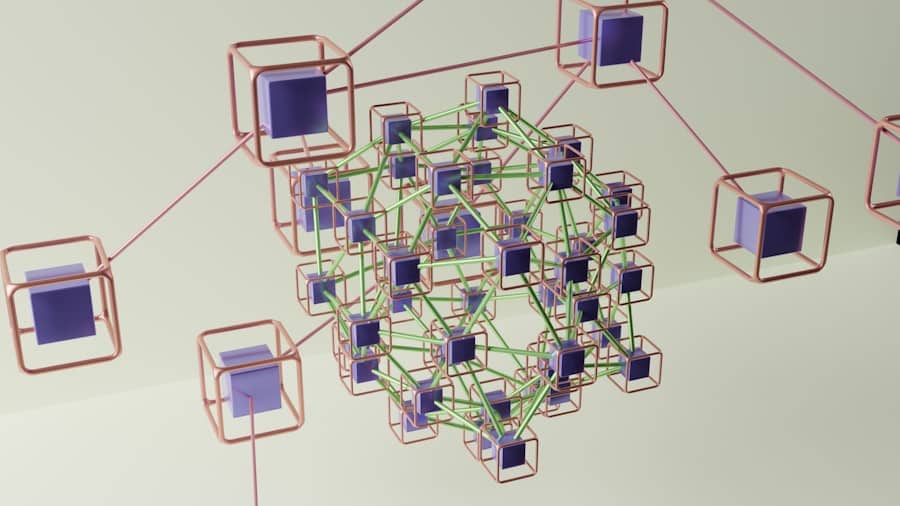The modern utility grid is a complex network that delivers electricity from producers to consumers, encompassing generation, transmission, and distribution systems. As the demand for energy continues to rise and the integration of renewable energy sources becomes more prevalent, the need for effective monitoring and management of these grids has never been more critical. Real-time utility grid monitoring refers to the continuous observation and analysis of grid performance, allowing operators to make informed decisions based on current conditions.
This capability is essential for ensuring reliability, efficiency, and sustainability in energy delivery. Real-time monitoring systems leverage advanced technologies to collect data from various points within the grid, including substations, transformers, and distribution lines. By utilizing sensors and communication technologies, operators can gain insights into grid performance metrics such as voltage levels, load conditions, and fault occurrences.
This data-driven approach not only enhances operational efficiency but also enables utilities to respond swiftly to disruptions, thereby minimizing downtime and improving service reliability for consumers.
Key Takeaways
- Real-time utility grid monitoring is essential for ensuring the stability and reliability of the power grid.
- Wireless technology plays a crucial role in utility grid monitoring by enabling remote and real-time data collection.
- Advantages of real-time monitoring include early detection of faults, improved grid efficiency, and better response to emergencies.
- Challenges and limitations of real-time monitoring include the need for reliable connectivity, data security concerns, and the high cost of implementation.
- Successful case studies demonstrate the effectiveness of wireless technology in utility grid monitoring, leading to improved grid performance and customer satisfaction.
The Role of Wireless Technology in Utility Grid Monitoring
Wireless technology plays a pivotal role in the evolution of utility grid monitoring by facilitating seamless communication between various components of the grid. Traditional monitoring systems often relied on wired connections, which could be cumbersome and expensive to install and maintain. In contrast, wireless solutions offer greater flexibility and scalability, allowing utilities to deploy monitoring devices in remote or hard-to-reach locations without the need for extensive cabling infrastructure.
One of the most significant advancements in wireless technology for utility grid monitoring is the use of Internet of Things (IoT) devices. These smart sensors can be installed throughout the grid to collect real-time data on various parameters such as energy consumption, equipment health, and environmental conditions. The data collected by these devices is transmitted wirelessly to centralized control systems, where it can be analyzed and acted upon.
This capability not only enhances situational awareness for grid operators but also supports predictive maintenance strategies that can prevent equipment failures before they occur.
Advantages of Real-Time Monitoring for Utility Grids
The implementation of real-time monitoring systems in utility grids offers numerous advantages that significantly enhance operational efficiency and reliability. One of the primary benefits is the ability to detect and respond to anomalies in real time. For instance, if a transformer experiences an unexpected surge in temperature or a sudden drop in voltage, real-time monitoring systems can alert operators immediately.
This rapid response capability allows utilities to address issues before they escalate into larger problems, such as widespread outages or equipment damage. Moreover, real-time monitoring contributes to improved energy management by providing utilities with detailed insights into consumption patterns and load fluctuations. By analyzing this data, utilities can optimize their generation strategies, ensuring that supply aligns with demand while minimizing waste.
This is particularly important in the context of integrating renewable energy sources, which can be variable and unpredictable. With real-time data at their fingertips, utilities can make informed decisions about when to draw from renewable sources versus traditional fossil fuels, ultimately leading to a more sustainable energy mix.
Challenges and Limitations of Real-Time Utility Grid Monitoring
Despite the numerous advantages associated with real-time utility grid monitoring, several challenges and limitations must be addressed to fully realize its potential. One significant challenge is the integration of diverse technologies and systems within existing infrastructure. Many utility companies operate with legacy systems that may not be compatible with modern wireless technologies or IoT devices.
This lack of interoperability can hinder the deployment of comprehensive monitoring solutions and may require substantial investments in upgrades or replacements. Additionally, the sheer volume of data generated by real-time monitoring systems poses another challenge. While having access to vast amounts of data can enhance decision-making, it also necessitates robust data management and analytics capabilities.
Utilities must invest in advanced data processing tools and skilled personnel who can interpret this information effectively. Without proper data governance frameworks in place, there is a risk of information overload, which could lead to delayed responses or misinformed decisions.
Case Studies of Successful Implementation of Wireless Tech in Utility Grid Monitoring
Several utilities around the world have successfully implemented wireless technology for real-time grid monitoring, showcasing its effectiveness in enhancing operational efficiency and reliability. One notable example is Pacific Gas and Electric (PG&E) in California, which has deployed a network of wireless sensors across its distribution system.
By leveraging this real-time data, PG&E has been able to identify potential issues before they escalate into outages, resulting in improved service reliability for its customers. Another compelling case study is that of Enel, an Italian multinational energy company that has embraced smart grid technologies across its operations. Enel has implemented a comprehensive wireless monitoring system that integrates IoT devices throughout its grid infrastructure.
This system allows for real-time monitoring of energy consumption patterns and grid performance metrics. As a result, Enel has achieved significant reductions in operational costs while enhancing its ability to manage renewable energy sources effectively.
The Future of Real-Time Utility Grid Monitoring with Wireless Technology
Looking ahead, the future of real-time utility grid monitoring is poised for further transformation as advancements in wireless technology continue to evolve. The proliferation of 5G networks is expected to play a crucial role in enhancing communication capabilities within utility grids. With faster data transmission speeds and lower latency, 5G technology will enable utilities to collect and analyze data in real time more effectively than ever before.
Moreover, the integration of artificial intelligence (AI) and machine learning algorithms into monitoring systems will further enhance predictive analytics capabilities. By leveraging historical data alongside real-time inputs, AI-driven systems can identify patterns and trends that may not be immediately apparent to human operators. This predictive capability will empower utilities to optimize maintenance schedules, improve load forecasting accuracy, and enhance overall grid resilience.
Security and Privacy Considerations in Real-Time Utility Grid Monitoring
As with any technology that relies on data collection and communication, security and privacy considerations are paramount in real-time utility grid monitoring. The increasing connectivity of devices within the grid creates potential vulnerabilities that could be exploited by malicious actors. Cybersecurity threats pose significant risks not only to the integrity of the data being collected but also to the overall reliability of the grid itself.
Utilities must implement robust cybersecurity measures to protect their monitoring systems from unauthorized access and attacks. This includes employing encryption protocols for data transmission, conducting regular security audits, and training personnel on best practices for cybersecurity awareness. Additionally, privacy concerns related to consumer data must be addressed transparently.
Utilities should establish clear policies regarding data usage and ensure compliance with relevant regulations to maintain consumer trust.
The Impact of Wireless Tech on Utility Grid Monitoring
The integration of wireless technology into real-time utility grid monitoring represents a significant leap forward in how utilities manage their operations. By enabling continuous observation and analysis of grid performance metrics, wireless solutions enhance operational efficiency while improving service reliability for consumers. Despite challenges related to integration, data management, and security concerns, successful case studies demonstrate the transformative potential of these technologies.
The future promises even greater advancements as 5G networks proliferate and AI-driven analytics become commonplace within utility operations. Ultimately, the impact of wireless technology on utility grid monitoring will shape the way we produce, distribute, and consume energy in the years to come.
If you are interested in learning more about the latest trends in digital marketing, you should check out this article. It discusses the upcoming trends that will shape the digital marketing landscape in the coming years. Just like how wireless technology is revolutionizing utility grid monitoring, digital marketing is also evolving with new technologies and strategies. Both fields rely on cutting-edge technology to improve efficiency and effectiveness.
FAQs
What is real-time utility grid monitoring?
Real-time utility grid monitoring is the process of continuously monitoring and analyzing the performance and condition of a utility grid, such as an electrical grid, in real time. This allows for immediate detection of any issues or abnormalities, and enables quick response and resolution.
How does wireless technology enable real-time utility grid monitoring?
Wireless technology enables real-time utility grid monitoring by providing a means for data collection, transmission, and communication without the need for physical connections. This allows for the deployment of sensors and monitoring devices in remote or hard-to-reach locations, and facilitates the seamless transfer of data for analysis and decision-making.
What are the benefits of real-time utility grid monitoring enabled by wireless technology?
The benefits of real-time utility grid monitoring enabled by wireless technology include improved grid reliability, enhanced safety, more efficient maintenance and operations, better resource allocation, and the ability to proactively identify and address potential issues before they escalate.
What types of wireless technologies are commonly used for real-time utility grid monitoring?
Commonly used wireless technologies for real-time utility grid monitoring include cellular networks, satellite communications, radio frequency (RF) communication, Wi-Fi, and mesh networks. Each technology has its own advantages and is chosen based on the specific requirements of the monitoring application.
How does real-time utility grid monitoring contribute to the advancement of smart grids?
Real-time utility grid monitoring contributes to the advancement of smart grids by providing the data and insights necessary for optimizing grid performance, integrating renewable energy sources, managing demand, and enabling the implementation of advanced grid management and control systems.



